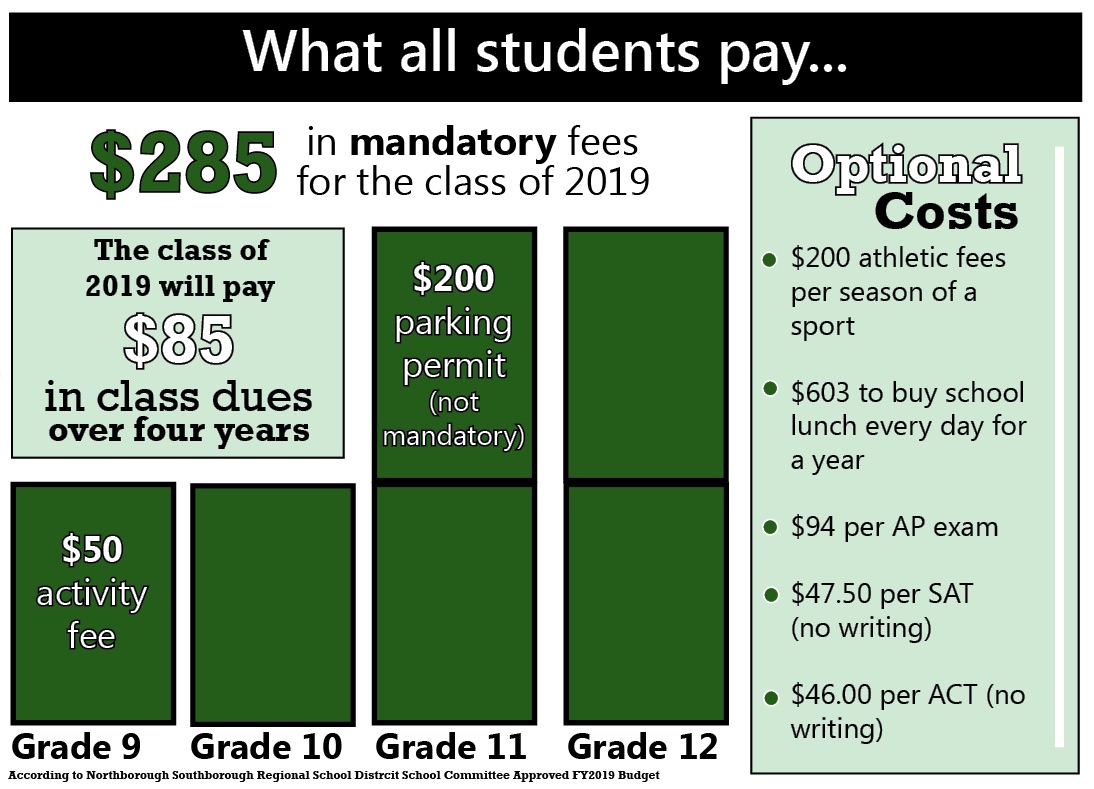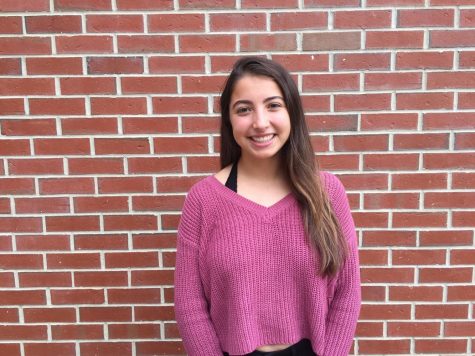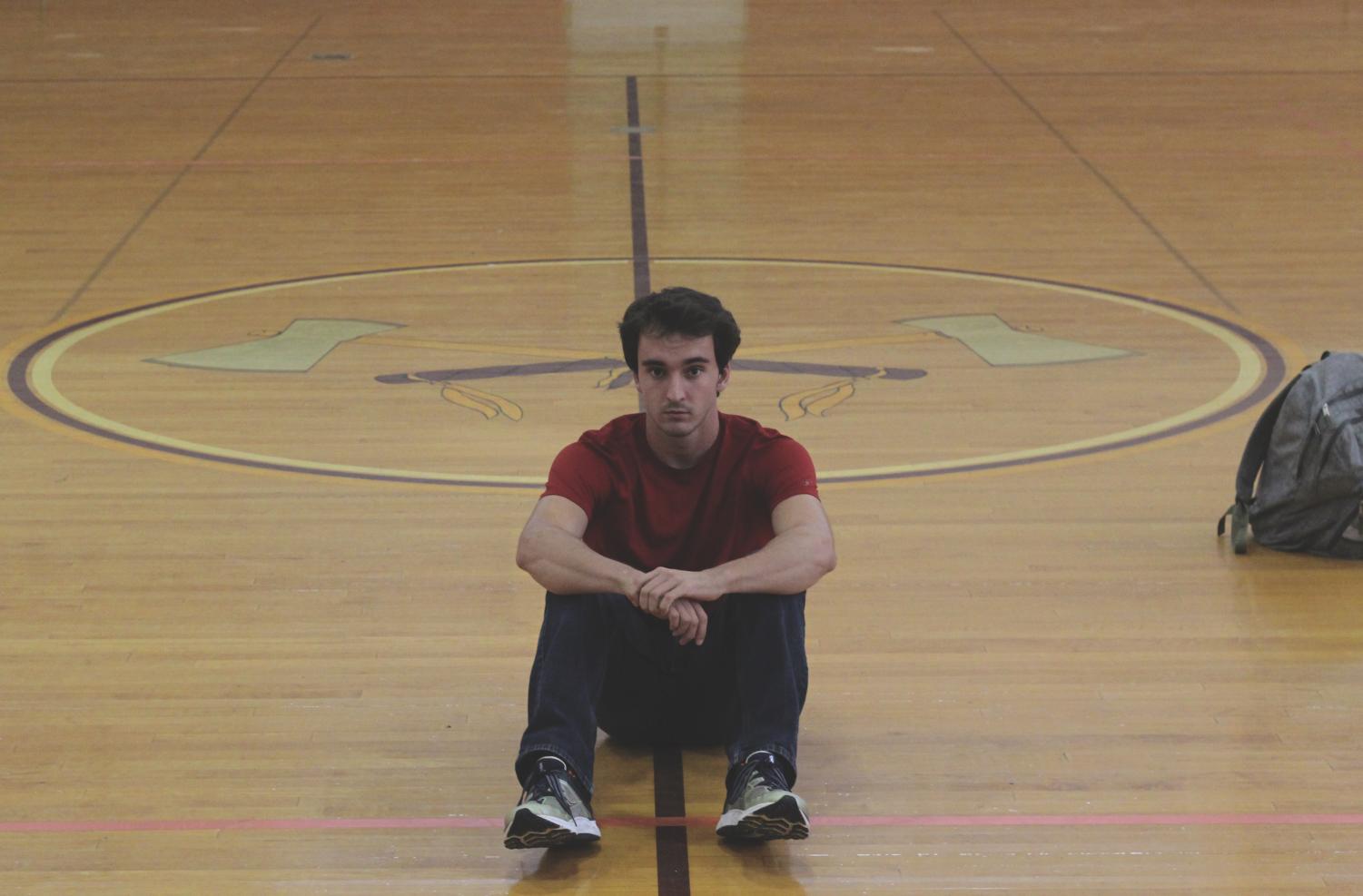Between activity fees and class dues, every member of the Algonquin class of 2019 will pay $285 by graduation. Add in an optional parking permit junior and senior year, and that cost goes up to $685; if a student plays one season of a sport for four years, the price spikes to $1,485. And if a student is a three-sport athlete for four years? Fees add up to $3,085.
All of these mandatory fees lead to frustration for many students and parents.
Still, according to principal Dr. Sara Pragluski Walsh, Algonquin is a “fee-based” school which relies on these funds in order to provide all of the extra-curricular and athletic opportunities that it currently does.
Still, the student body and their families are left wondering where their money actually goes.
A Fee-Based School
According to Walsh, being a “fee-based” school means that a significant portion of the school’s funding comes from mandatory and optional fees, rather than local taxes. According to the Massachusetts Department of Elementary and Secondary Education website, the in-district expenditures per pupil in 2016 were $14,890. Walsh feels that it would be wrong for the school to ask the government for more tax money without having some form of conversation with the community.
“If we’re not fee based, that really does directly hit the tax and funding of the school, and it has to be be a community conversation,” Walsh said. “This can’t come from the school.”
Without these fees or increasing local taxes, Algonquin would not have the necessary budget to support all of the extra opportunities it currently provides students, such as clubs, according to Walsh.
Still, Walsh acknowledges that there are drawbacks to requiring public school students to pay extra fees as it can be frustrating for students and parents.
“I think it’s really hard to be a fee-based school, but I respect and understand the why,” Walsh said. “I would prefer to not have to be fee-based at all. But I’m willing to do it if it makes sure the kids get everything they need.”

Activity Fees
Each year, students are required to pay a $50 activity fee. Activity fees are used to pay club advisers, according to Walsh.
“[Activity fees are in] a separate account that I can not touch: it’s considered a student-based account and that’s intentional,” Walsh said.
The Principal’s administrative assistant Michele Capalbo handles activity fee money instead of Walsh.
The money is distributed between clubs by on need based on club attendance and the number of meetings, according to Walsh.
“We have new clubs each year, we have clubs that change, we have growing clubs, and if you look at the contract there’s different types of clubs,” Walsh said. “That depends on how often they meet [and] how many kids they see…but our goal is to spend all of that money each year to that amount. Any money that rolls over, it helps us to just fund the next club.”
Class Dues
According to Class Representative, former class President and senior Andy Zhao, class dues are a fee set by each grade’s steering committee. This money directly benefits the grade and goes towards funding activities. For the senior class, the price is $85 over the course of four years.
“I think class dues is one of the least mysterious fees,” Zhao said. “[The money goes to] events that we hold, free food-especially during senior year we have a lot of free food-free events, free t-shirts… All of that money is going straight to your grade, straight to events for you.”
However, Student Council President and Chairperson for the Student Advisory Committee, senior Nellie Zhang acknowledges that while the fee is mandatory for everyone, not everyone attends the events the fee helps fund.
“It does kind of suck that some people don’t go to the events, and we do try to make it so that everyone can come to these events,” Zhang said. “But at the same time, we can use this money that we get to do bigger and better [events], which will hopefully incentivize more kids to come.”
Students can have a say in how the money is sent by attending Steering Committee meetings, and Zhao encourages anyone interested to share their input.
“If you ever want to play a part in that and make your voice heard, you can always go to Steering,” Zhao said. “You can literally control the money that you pay if you go to Steering.”
Parking Permits
The cost of a parking permit is $100 per semester, totaling $200 if a student chooses to park for the whole year. According to Walsh, the parking lot and driveway leading into the school are not financed by the town, which is why they must be subsidized by fees.
Therefore, the funds are required to cover the cost of parking lot maintenance, which includes plowing, sanding, de-icing, filling potholes, fixing curbs, painting lines, maintaining the lights and removing fallen trees. They also pay for the speed bumps and parking lot drainage.
Walsh explains that she has faced frustration from students and parents alike regarding the fee, but students have the option not to purchase a parking permit due to the free regional busing provided for by the towns’ taxes.
“We could change our structure and increase significantly what we ask the town for in finances so that we weren’t a fee-based school, but not all of our town individuals necessarily would support that because they’re already paying for regional busing,” Walsh said. “[Algonquin students] don’t have to pay $600-700 dollars [for bussing] like they do in local districts [whose local taxes do not cover busses].”
However, senior Jack Butler opted not to buy a parking permit last year, and he feels that it is difficult to rely on busing when trying to work around after school activities.
“I normally had to take the bus or get a ride from a friend, but it made staying late a lot more difficult,” Butler said. “I think it definitely made me feel like I had to buy one for this year, as I did not want to go through all of the same issues I faced last year regarding transportation.”

Athletic Fees
According to Athletic Director Michael Mocerino, the $200 per season athletic fee goes towards the overall athletic budget to pay for coaches’ salaries, equipment and game management, which refers to everything required for a competition. This includes referees, possible police presence, ticket-takers, announcers and timers.
There is a $900 family cap on athletic fees for families with multiple athletes.
Mocerino facilitates conversations with coaches to finalize year-to-year budgets per sport, and he addresses these needs on a basis of importance and safety.
“What’s allocated for every sport is determined by the needs for uniforms, equipment, numbers of contests, how many levels,” Mocerino said. “We’re always trying to provide a safe environment and a positive learning experience for all.”
Junior Lucy Gauvin has played seven seasons during her time at Algonquin, paying a total of $1,400 thus far to the Athletics Department.
“For someone who plays three sports a year, it does all add up, plus participating in fundraisers,” Gauvin said. “But the teams have to get the money for nice banquets, senior gifts, senior night and new equipment somehow.”
Fee Waivers
Families who demonstrate financial need have the option to waive mandatory fees, according to Walsh. The process involves working closely with Walsh and the guidance department.
“It’s a very private thing actually,” Walsh said. “It’s probably myself and the guidance counselor and maybe the individual that’s a part of the dues knows about that and nobody else. And that’s on purpose. We want to respect the family’s privacy.”
Some optional fees, such as athletic fees, also have a waiver process, according to Mocerino.
“The last thing you want to do is not give an opportunity for any student to participate, so we have to do our best to provide our athletes with every possibility and the best opportunities to participate and allow all of these athletes an opportunity to play,” Mocerino said.






